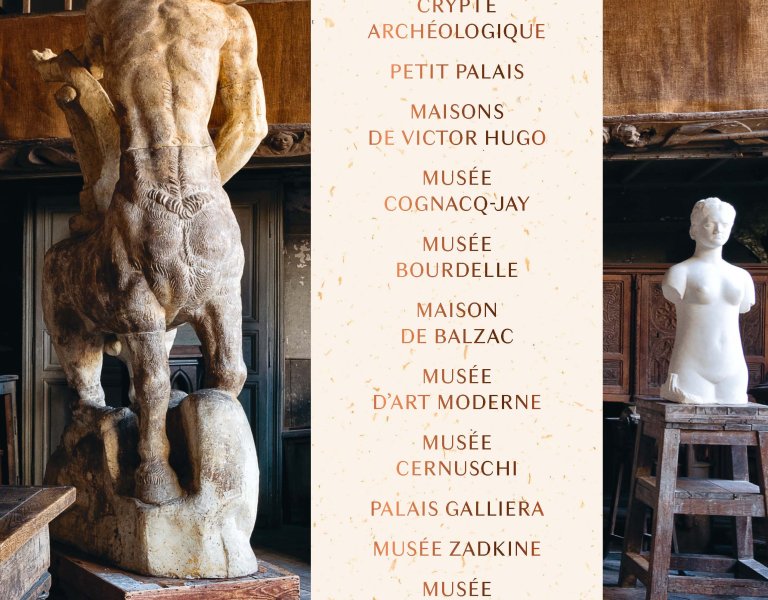
The collections of the city of Paris museums
Art and history museums, charming museums, artists’ and writers’ houses ... the fourteen City of Paris museums house collections of exceptional quality and diverseness. The collections are all, in varying degrees, a record of the history of Paris.
That history is illustrated explicitly at the Carnavalet Museum, the Paris Catacombs and the Général Leclerc–Liberation of Paris–Jean Moulin Museum . It is also illustrated by the memorabilia of famous Parisians like Victor Hugo, Honoré de Balzac and George Sand. And it is reflected in the life of collectors like Henri Cernuschi, Ernest Cognacq, Jacques Zoubaloff or Edward Tuck, who made Paris their chosen city.
These personalities who entrusted their collections to the curatorship of the City of Paris were the subject of a symposium (in french) jointly organised by the City of Paris Museums and the National Art History Institute (INHA) in 2013. During that two day conference, there were papers on the origins and formation of the collections in the City of Paris museums and also on the decisive contributions of donors – donations that played a key role in founding the museums or significantly shaped their identity, as well as large, recent donations that allow the writing of that history to continue into the present.
Notable among those emblematic gifts are the Paul Meurice donation, which enabled the creation of a museum devoted to Victor Hugo ; the Cognacq bequest, from which the Musée Cognacq-Jay was created; the Dutuit bequest which, in 1902, considerably swelled the then embryonic collections of the Petit Palais ; and the Girardin bequest, originally attributed to the Petit Palais, but which laid the foundations for the new Musée d’Art Moderne de la Ville de Paris in 1961.
Le portail des collections

Tous droits réservés
Le portail présentant les collections des quatorze musées réunis laisse entrevoir la variété et le foisonnement de ces collections, une mosaïque d’œuvres, appartenant à des périodes et des régions variées, au sein de laquelle émergent toutefois de grands ensembles.
Certaines périodes sont particulièrement représentées, comme le XVIIIe siècle, époque où les artistes et les modes de Paris ont essaimé dans toute l'Europe par exemple à Cognacq-Jay, à Galliera, à Carnavalet et au Petit Palais. Dans ces deux derniers musées, on peut aussi savourer toute la richesse du XIXe siècle, siècle auquel s’intéressent plus particulièrement les maisons de Victor Hugo, la maison de Balzac et le musée de la Vie romantique.
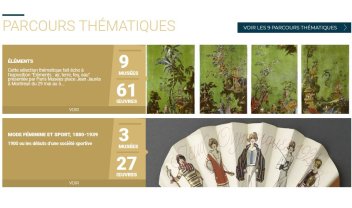
Tous droits réservés
Paris a toujours été célèbre comme capitale des arts de l'élégance : mobilier, orfèvrerie, et, bien sûr, tout ce qui a trait au costume et à la mode y sont naturellement très présents dans les musées municipaux.
Les collections de Galliera, de Carnavalet, de Cognacq-Jay et du Petit Palais sont, dans ce domaine, d'une extrême richesse.
The city of Paris museum of modern art
© Fouin
Musée d'art moderne de la Ville de Paris
Located in the Palais de Tokyo, which was originally built for the 1937 International Exposition, the City of Paris Museum of Modern Art (Musée d’art moderne de la Ville de Paris) was opened in 1961.
Since its inception, donors, collectors and artists have been an essential source of enrichment for the museum. The exceptionally generous bequest of Dr. Maurice Girardin in 1953 (over 500 works) laid the basis for much of the current collection, with a core of Fauvist paintings, an extensive collection of Cubist works and many works by School of Paris artists. With almost 10,000 works, the collections of the City of Paris Museum of Modern Art represent the rich diversity of artistic creation in the 20th and 21st centuries, and reflect the dynamism of the contemporary art scene. The Museum offers a vast panorama of modern and contemporary art centred on a nucleus of historic works by major artists of the early 20th century: Henri Matisse, Pablo Picasso, Raoul Dufy, Maurice de Vlaminck, Georges Rouault, Bernard Buffet and more. A succession of acquisitions has come to illustrate all the major currents of 20th century art – Fauvism, Cubism, School of Paris Abstractions, New Realism, Narrative Figuration, conceptual art - as well as contemporary creativity.
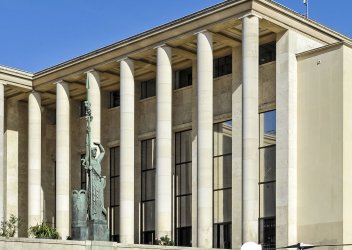
(c) Pierre Antoine
Il offre un vaste panorama sur l’art moderne et contemporain, autour d’un noyau historique d’œuvres d’artistes majeurs du début du XXe siècle : Henri Matisse, Pablo Picasso, Raoul Dufy, Maurice de Vlaminck, Georges Rouault, Bernard Buffet, etc.
Les enrichissements successifs permettent d’illustrer tous les grands courants de l’art du XXe siècle – Fauvisme, Cubisme, École de Paris, Abstractions, Nouveau Réalisme, Figuration Narrative, art conceptuel – ainsi que la création contemporaine.
Lien vers le site internet du musée.
La maison de Balzac (Balzac's house)
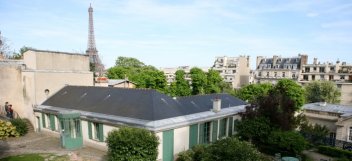
Tous droits réservés
Nestling on the slopes of Passy, Balzac's house is the only one of the novelist’s Parisian residences that is still standing.
Between 1840 and 1847, Balzac corrected the whole of The Human Comedy and wrote some of his great masterpieces in the study of this house. The museum has personal memorabilia of Balzac on display, as well as paintings, engravings and objects relating to his family and his contemporaries; there are also many first editions, manuscripts and illustrations. With its presentation of portraits of the artist and his characters, with paintings, prints, drawings, and an interesting and stimulating scenography, the museum encourages visitors to think about Balzac, and it suggests new approaches to reading The Human Comedy for first-time readers as well as those coming back to it. The author's creative process, and also the influence of his work on other artists is at the heart of the museum project and guides its acquisition policy.
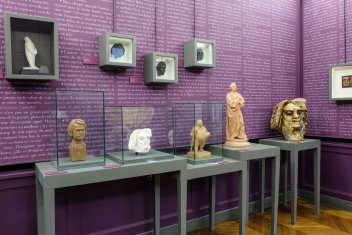
© Paris Musées _ Raphaël Fournier.
À travers la présentation de portraits de l'artiste ou de ses personnages, de peintures, gravures, dessins, et à l'aide d'une scénographie originale, le musée incite le visiteur à s'interroger sur Balzac et suggère des chemins originaux pour conduire à la découverte comme à la relecture de La Comédie humaine. Le processus de création de l’auteur, ainsi que la résonnance que son œuvre a pu avoir sur d’autres artistes est au cœur du projet du musée et guide sa politique d’acquisition.
Lien vers le site internet du musée
The musée Bourdelle

© Benoît Fougeirol 2015
Musée Bourdelle
In the gardens and workshops where Antoine Bourdelle (1861-1929) lived and worked, the Musée Bourdelle houses a collection of plaster casts, bronzes and marble sculptures by this artist. He was Rodin’s assistant, and taught Giacometti, Germaine Richier and Vieira da Silva.
The museum also keeps an exceptional collection of documents and photographs relating to Bourdelle’s life and work. Since June 2012, visitors have had the benefit of a new trail through the permanent collections; it is educational, chronological and sensitive and gives a clear idea of his artistic development. In the intimacy of Bourdelle’s apartment, where the great artist lived and worked, in the immensity of the Great Hall, full of plaster casts bathed in light, and in the bold purity of the modern extension, visitors can take their own time to explore the trajectory of this visionary sculptor’s life and his constant quests after style.L

(c) Benoît Fougeirol
Intimité de l’appartement de Bourdelle où le sculpteur vécut et travailla, majesté du Grand Hall des plâtres à la lumière diffuse, épure audacieuse de l'extension moderne - le visiteur découvre le parcours d'une vie et d'une œuvre, suit à son rythme les incessantes recherches stylistiques et plastiques du sculpteur visionnaire.
Lien vers le site internet du musée
The Musée Carnavalet – History of Paris

© François Grinberg
Musée Carnavalet
The major historical collections are those kept by the Musée Carnavalet – Histoire de Paris. It is the history museum of Paris – as capital city, metropolis and global city – that combines history, archaeology and social and urban identity.
Located in listed historical buildings in the heart of the Marais conservation area, the Musée Carnavalet celebrates 150 years of existence in 2016. The museum’s magnificent, though under-explored collections cover a timescale stretching from the Neolithic age to the present day. Dugout canoe discovered during archaeological excavations in Bercy, mascarons from the Pont Neuf, a scale model of the Ile de la Cité in the 16th century, Ledoux’s Café militaire, revolutionary drawings by Lesueur, or the Fouquet jewellery store decorated by Mucha : listing all its highlights could get tedious ! These decorations, shop signs, pieces of furniture, paintings, sculptures, medals, scale models, art objects and historical objects, prints, drawings, posters and photographs, makes us discover the men and women who loved Paris and shaped its history (St Genevieve, Etienne Marcel, Madame de Sévigné, Baron Haussmann, Marcel Proust) but more than that they tell the story of all Parisians, past and present. The Musée Carnavalet-Histoire de Paris occupies two magnificent townhouses and an orangery. It operates in synergy with two complementary sites: the Archaeological Crypt of the Ile de la Cité, and the Paris Catacombs. In 2016, the City of Paris embarked on a renovation project for its history museum, in response to a strong social demand for history on the one hand, and also to an evolving approach to museums on the part of the public. In 2020 visitors will experience a newly thought-out trail through the permanent collections, as well as more services and cultural activities.
The musée Cernuschi

Musée Cernuschi
In 1896, the wealthy French banker Henri Cernuschi made a bequest to the city of Paris of his mansion on the edge of the Parc Monceau with his collection of Oriental art he had acquired during his travels.
In this mansion, by the architect William Bouwens der Boijen (1834-1907), a large central room was designed to give pride of place to the most impressive piece in the collection, the Amida Buddha. Henri d'Ardenne Tizac ( 1877-1932), who was curator from 1905 to 1932, transformed a traveller’s house into a modern heritage institution with strong links to the academic world and supported, after 1922, by an active society of friends. He turned it into a museum specialising in the art and archaeology of ancient China, from earliest times to the 13th century. Successive directors have maintained this bias, while continuing to show strong interest in other far Eastern cultures (for example, Japan and Vietnam). The museum, which was completely renovated in 2005, now possesses a remarkable collection of Asian art, regularly enhanced by acquisitions and donations, and it also houses one of the largest collections of Chinese art in Europe.
The musée Cognacq-Jay

© Didier Messina
The museum is located in the heart of the Marais district, in a fine town house (now a listed 16th–18th century building); it hosts the art collections of Ernest Cognacq and his wife Marie-Louise Jay, the founders of the Samaritaine store. The collections were bequeathed to the City of Paris in 1928.
With the notable exception of an important early painting by Rembrandt, most of the works presented are from the 18th century. They include paintings by Canaletto, Tiepolo, Boucher, Fragonard, Greuze, and Reynolds; pastels by Quentin de La Tour and Perronneau; sculptures by Houdon, Lemoyne, and Clodion; Dresden china; gold objects and stamped furniture. Far from being ‘closed’, like other institutions that have grown out of a particular individual’s collections, the Cognacq-Jay collection is added to each year through acquisitions that conform to the taste and the eye of an early 20th century collector, who lived at a time when 18th century art and art objects were the staple of every bourgeois interior. The nature of the collection, which largely consists of small objects, and the selection of scenes depicting intimate subjects – ranging from interiors to portraits –, makes the museum a fine space in which to contemplate the spirit of the French 18th century as it was understood at the time of the Cognacq-Jays – a century in which courteous social interaction, conversation and elegance were fundamental to individual development.
The Palais Galliera

Tous droits réservés
A mere stone’s throw from the boutiques of the prestigious fashion designers, the Musée Galliera is housed in a Renaissance-inspired palace.
In a series of temporary, monographic exhibitions (e.g. famous names in couture, figures from the world of fashion), or thematic exhibitions (such as a decade, a type of clothing, or a set of influences), the museum showcases some of the priceless but fragile clothes in its collections, which reflect the creative genius of fashion from the 18th century to the present day.
The Palais Galliera’s collections grew out of a mid-19th century collection that belonged to the Société d'Histoire du Costume. They have been enriched since then thanks to the generosity of many donors. Now estimated at 243,000 pieces, the collections of the Musée de la Mode de la Ville de Paris (the City of Paris Fashion Museum) reflect dressing styles in France from the 18th century to the present. In recent years, between 500 and 1500 pieces per year have been added to this exceptional collection, mainly through the support of generous donors. Given their fragility, the Palais Galliera collections can only be displayed for short periods of time, in the museum’s own temporary exhibitions or as special loans to partner museums.
The musée du général Leclerc de Hauteclocque

Vue de la façade du musée de la Libération de Paris– musée du général Leclerc – musée Jean Moulin. Photo : Ville de Paris
The Second World War, a crucial moment in the history of the twentieth century, is presented and explained to the public through the collections at this museum, which is organised around three Companions of the Ordre de la Libération: Leclerc, Moulin and the City of Paris .
The ‘General Leclerc’ collections stem partly from the donation, by the Maréchal Leclerc de Hauteclocque Foundation, of the Mairie de Paris’s historic collection – a collection which, until 1994, was kept at the Quartier Gramont Garrison, Saint-Germain-en-Laye – and partly from donations from the Anciens Français Libres (Former Free French) and the 2e DB (2nd Armoured Division).
For the most part, the collections consist of personal and everyday objects that belonged to the general and his soldiers during the Second World War and during their time in Indochina and North Africa, until Leclerc’s death in an accident in 1947. The collections of the Musée Jean Moulin were, to a large extent, the result of two generous bequests: one from Madame Antoinette Sasse and one from Madame Andrée Dubois and Madame Suzanne Escoffier, cousins of Jean Moulin. These two collections are made up of private archives from Jean Moulin or concerning him (photographs, letters, drawings, personal papers), as well as newspapers, press-clippings and memorabilia honouring him. There is also a wealth of material connected to the Liberation of Paris in the Museum’s collections. It includes: FFI weapons, school homework by children of the Liberation, photographs, posters, drawings and souvenirs of the Parisians’ celebrations (sheet music of popular songs, postcards, FFI armbands, patriotic bouquets and flags). These collections are the fruit of many donations from individuals and include a large number of photographs and snapshots taken by eyewitnesses as well as people actively involved in the Liberation.
The Petit Palais
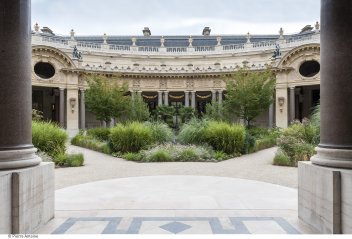
The Petit Palais was built by the architect Charles Girault for the 1900 Paris Exposition Universelle. In 1902, it became the Paris Museum of fine arts.
It houses a fine collection of paintings, sculpture, furniture and decorative arts, dating from Greek and Roman antiquity up to 1914. Among its many treasures, there is an exceptional collection of Greek vases and a large set of 17th-century Flemish and Dutch paintings including Rembrandt’s famous Self-portrait in oriental attire with poodle. The magnificent collection of 18th and 19th-century French paintings features major works by: Fragonard, Greuze, David, Géricault, Delacroix, Courbet, Pissarro, Monet, Renoir, Sisley, Cézanne and Vuillard. The sculpture collection includes superb work by Carpeaux, Carries and Dalou. The decorative art collection is particularly well endowed with Renaissance work and pieces from the early 1900s, including glasswork by Gallé, jewellery by Fouquet and Lalique, and the dining room designed by Guimard for his private residence. The museum also has a rich print and drawings department which comprises complete series of engravings by Dürer, Rembrandt, and Callot, and a rare collection of Nordic drawings.
The Musée de la Vie romantique

Didier Messina
Musée de la Vie romantique
Located in the romantic area known as ‘New Athens’, the Musée de la Vie Romantique is a magnificent backdrop for its collections, which, for the most part, are directly related to the arts in France under the July Monarchy. The presentation is organised around paintings by Ary Scheffer and his entourage
Ary Scheffer, a renowned occupant of the building, played host to the artistic and intellectual elite of Paris, which included Delacroix, Rossini, George Sand, Chopin, Gounod, Tourgueniev, and Dickens. The museum began life as a place of charm and memory, constructed around a few great figures, but nowadays the permanent-collections trail presents the visitor with a stratified narrative in which the biographies of personalities connected with the house are overlaid by a reflection of cultural life under the July Monarchy, artistic creation during the Romantic period, and the literary work of a late 19th-century thinker. George Sand memorabilia belonging to the City of Paris is held and displayed in the Rue Chaptal because it is particularly suited to the place, the project and George Sand’s role in the artistic life of the 19th century.
Victor Hugo's houses - Paris / Guernesey
Maison de Victor Hugo Paris
The City of Paris looks after of the two houses where Victor Hugo lived for the greatest length of time: the Hôtel de Rohan-Guéménée, in Paris, and Hauteville House in Guernesey.
The Hôtel de Rohan-Guéménée became a museum in 1902, thanks to Paul Meurice’s donation to the City of Paris. The apartment where Victor Hugo lived from 1832 to 1848 is now devoted to describing and depicting the three major periods of his life: before exile, exile, and after exile. In 1927, two years after the death of Georges Hugo (Victor’s grandson), George’s sister and his children, Marguerite, François and Jean, made a donation to the City of Paris of Hauteville House, the house Hugo had bought and furnished in Guernsey. The house is a powerful symbol, both of Hugo’s exile and of the great works wich were written here. Its striking decorations and breathtaking setting are highly expressive of his poetry, his philosophy and his vision of the world. Present-day visitors to Guernsey will find this sanctuary preserved exactly as it was. In Paris, the museum is split between Victor Hugo’s apartment on the second floor and a space on the first floor given over to temporary exhibitions. Two exhibitions are organised each year. They provide an opportunity for the visitor to discover elements of the collection that cannot be displayed permanently, and also to experience the resonances that Hugo’s prodigiously rich and modern body of work has for us today.
The musée Zadkine

© Benoît Fougeirol 2014
Musée Zadkine
The Musée Zadkine was created in the studios and the house where Russian-born sculptor Ossip Zadkine (1890-1967), a major figure in the School of Paris, lived and worked for nearly 40 years. It is a place of conservation and has great charm.
On its thirtieth anniversary, and after a year of works designed to make it accessible to all visitors, the museum re-opened to the public on 10 October 2012. The new layout for presenting the collections was governed by the question of materials. The idea was to create a dialogue between wood, stone, clay and plaster under the light that floods in through the glass roofs. In addition to the sculptures, which are the focal point of the collections, the musuem also houses drawings and gouaches by the artist, photographs of the studios, and a wealth of archive material, as well as a collection of works by Zadkine’s widow, the artist Valentine Prax.